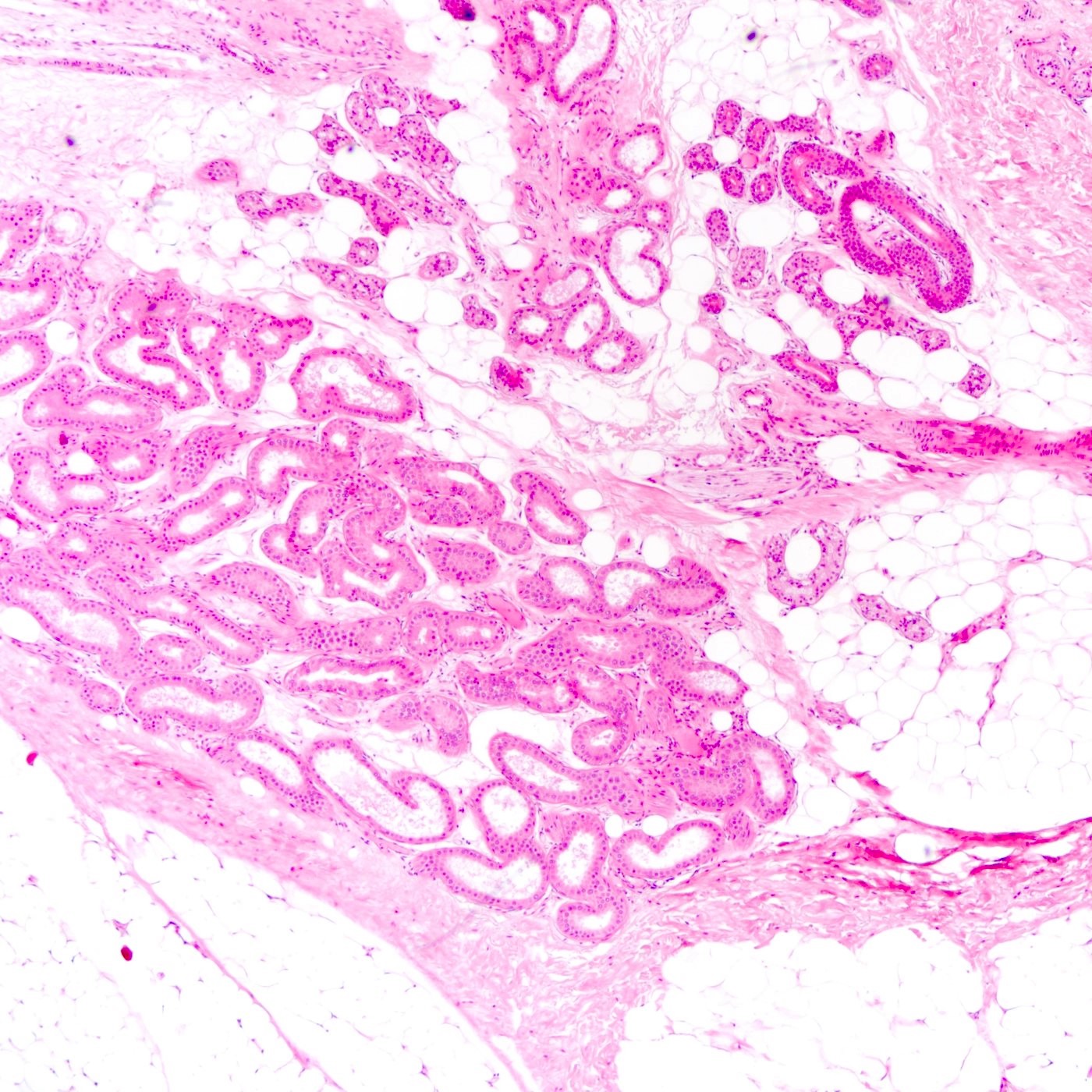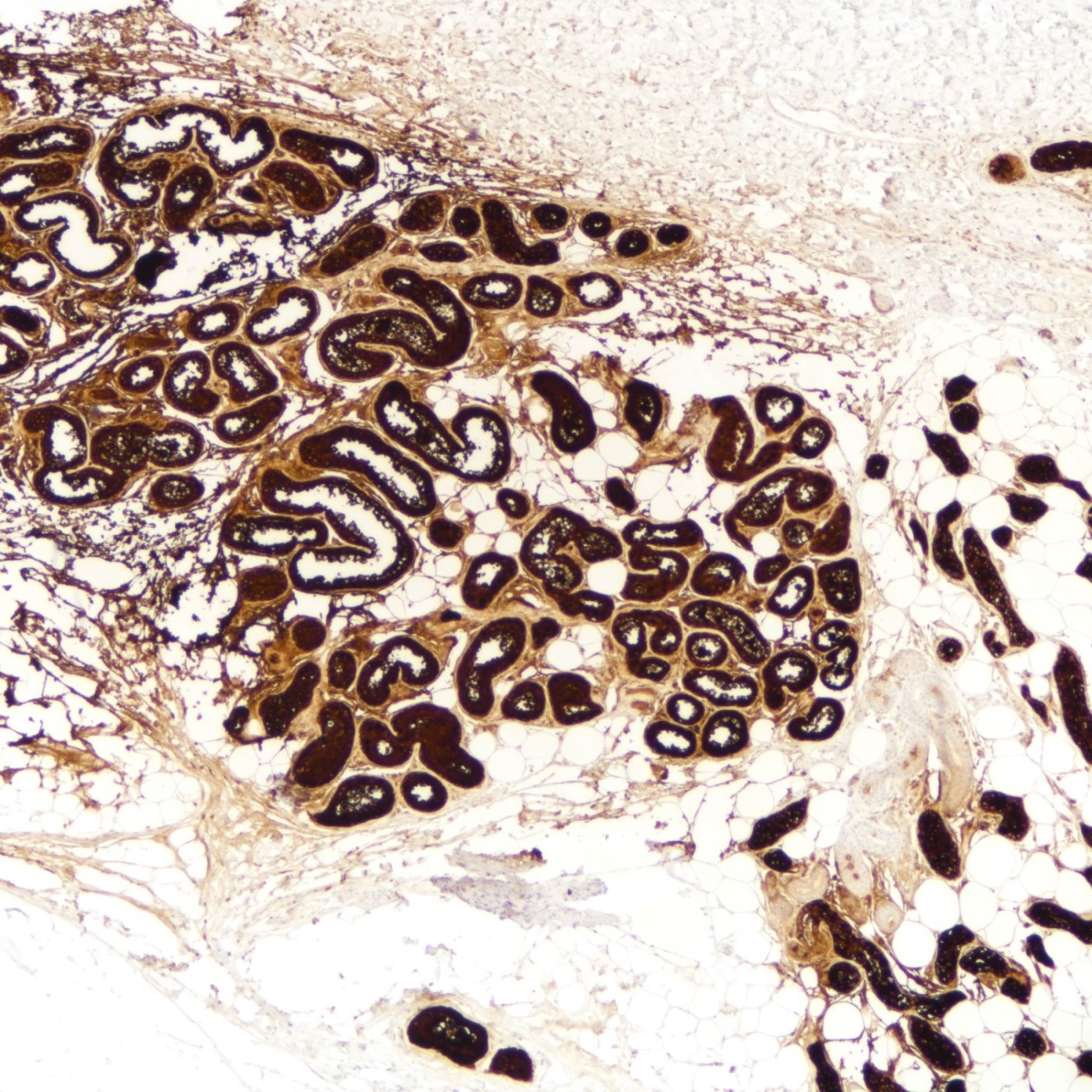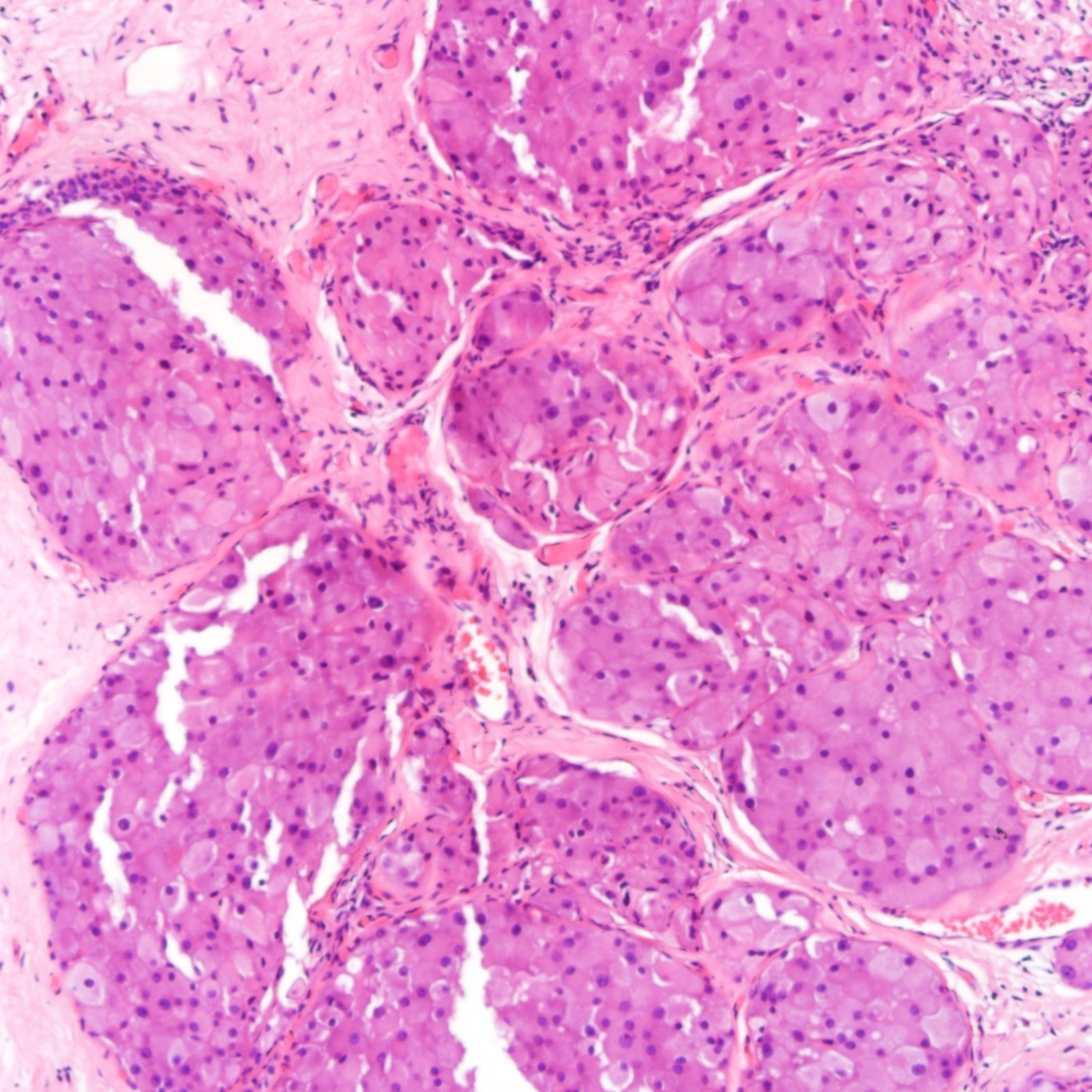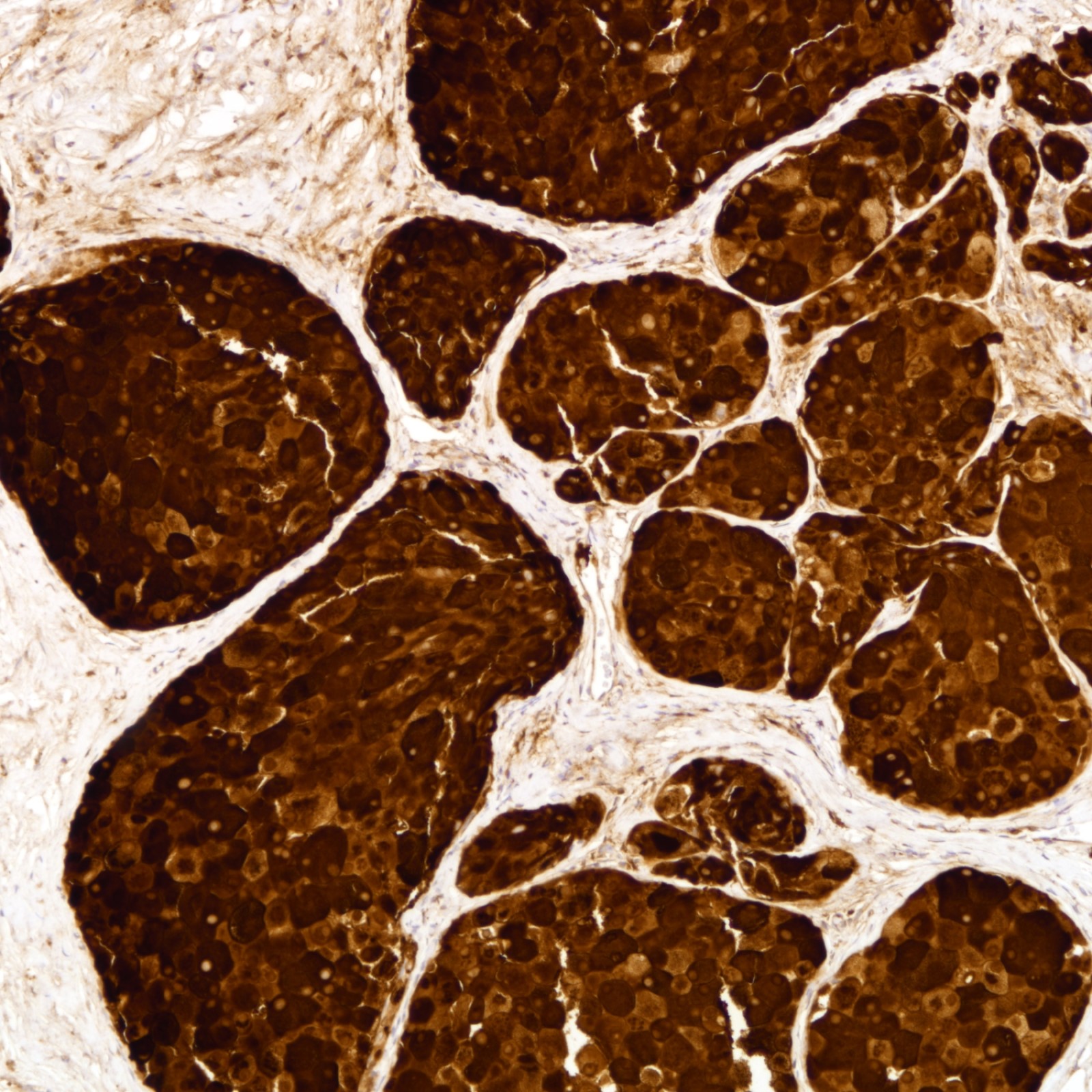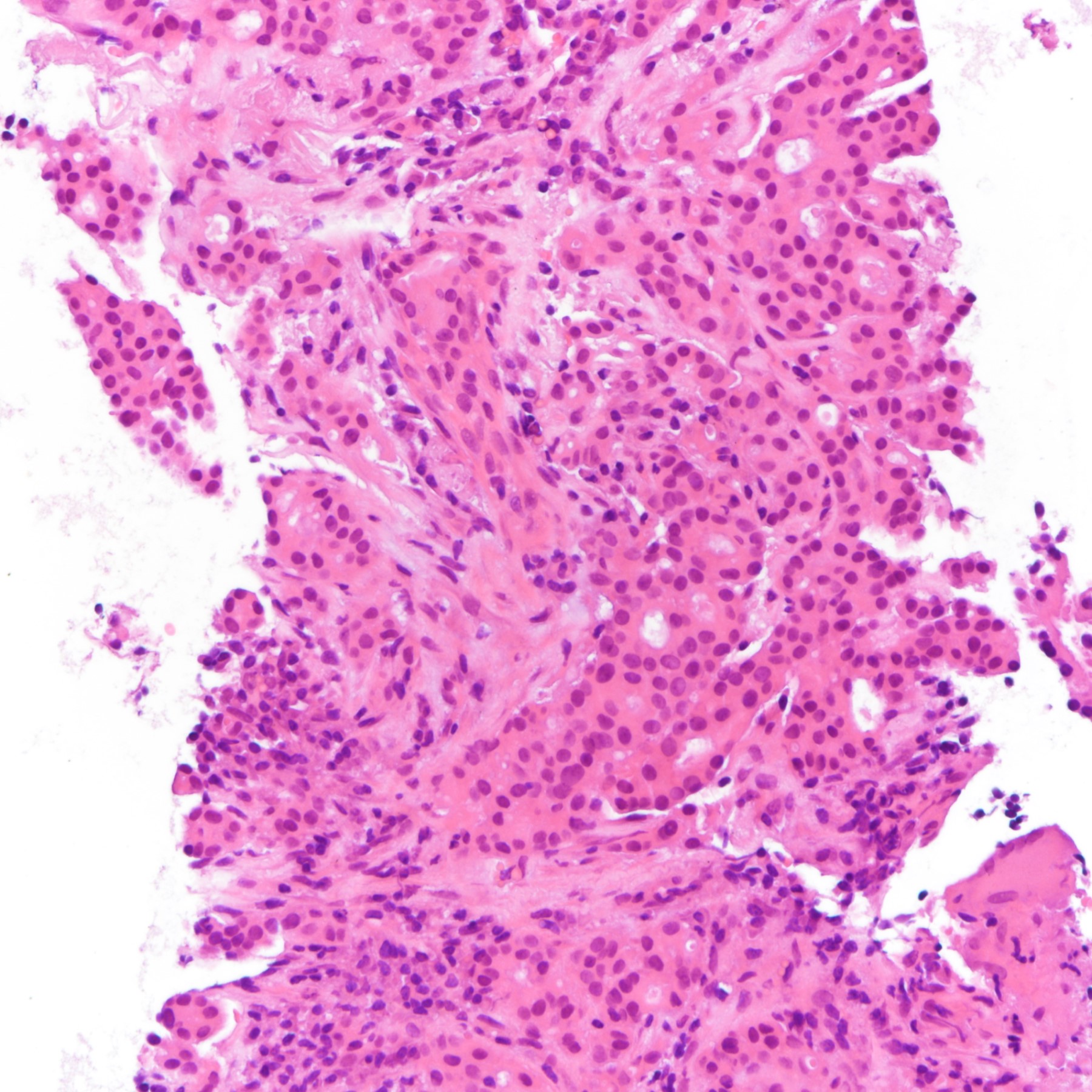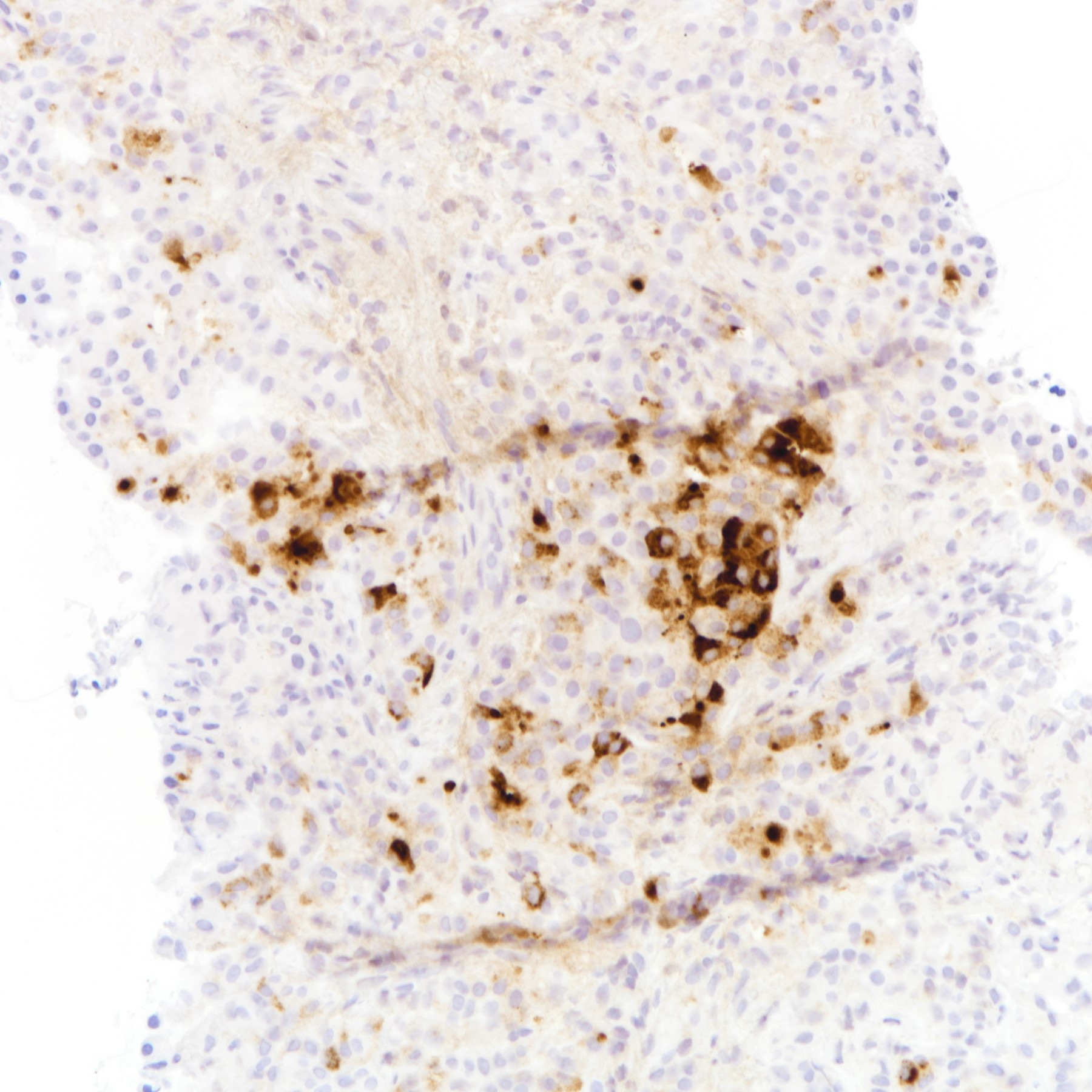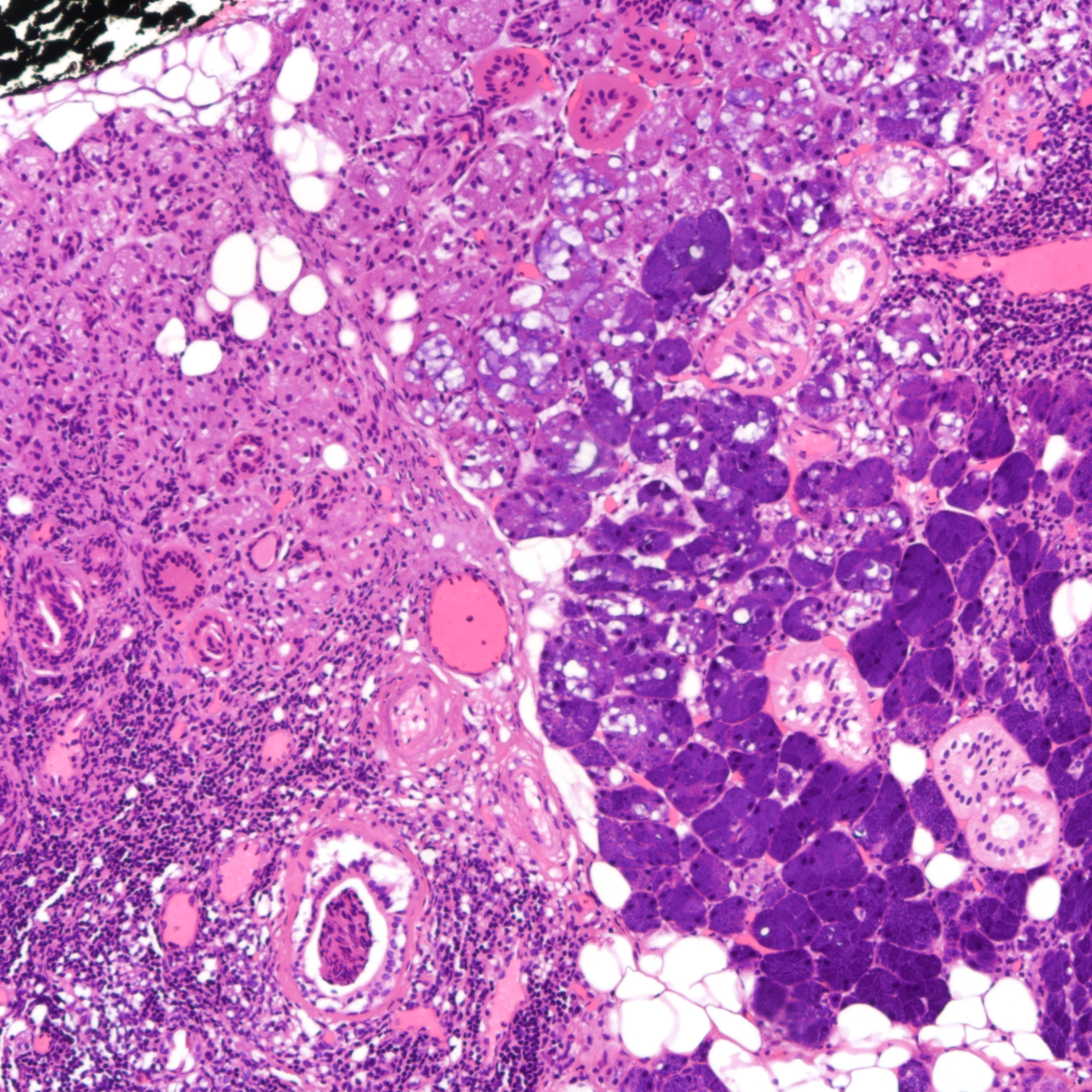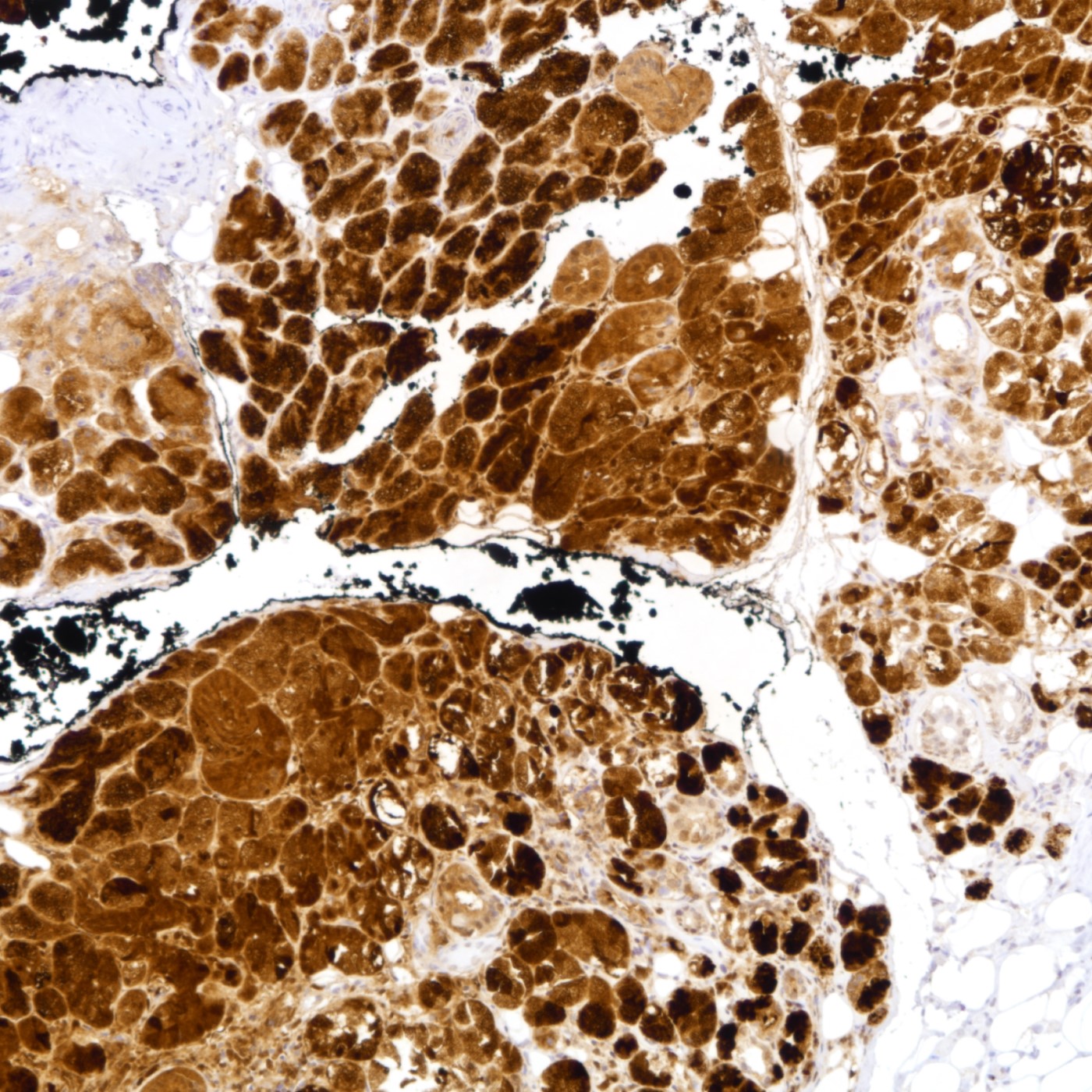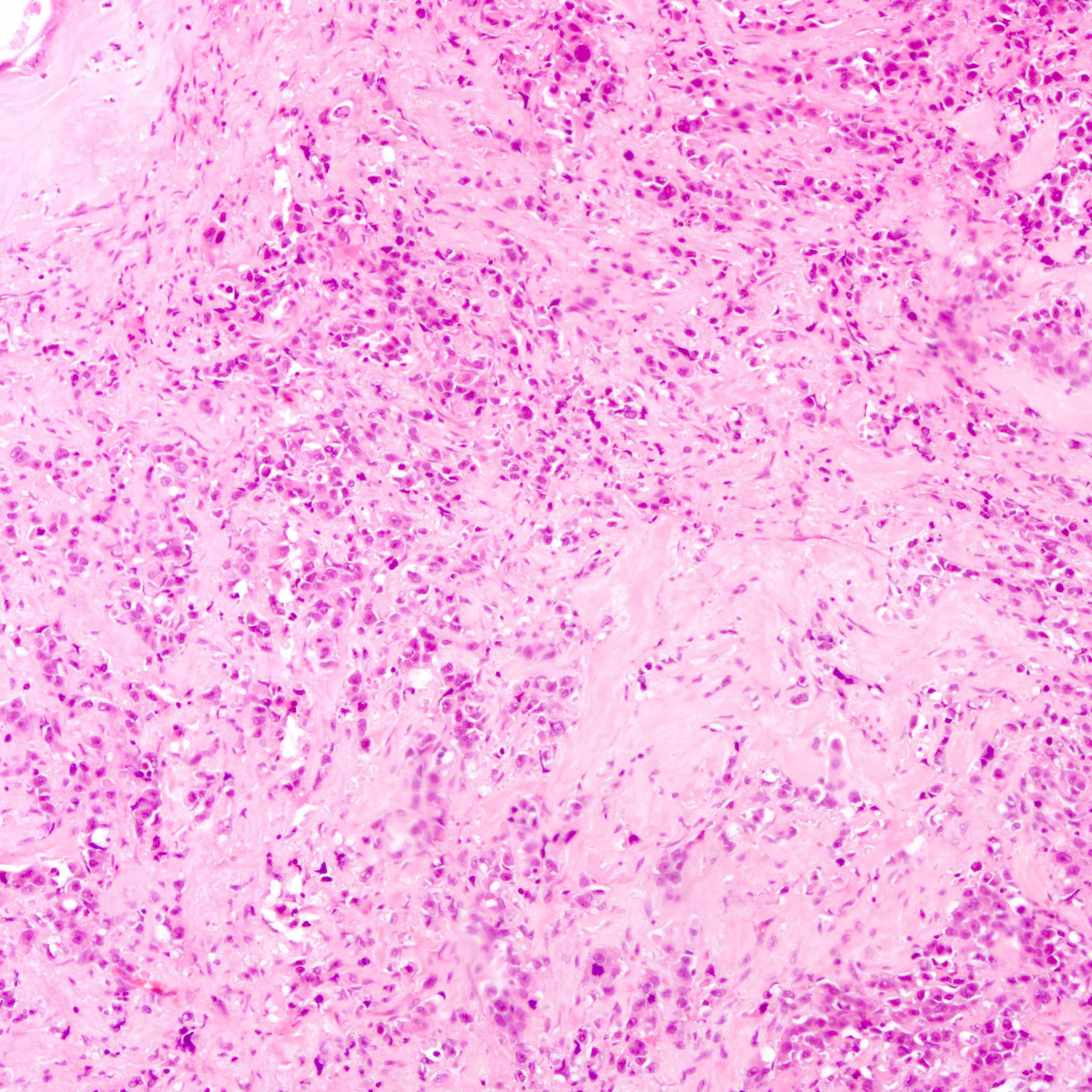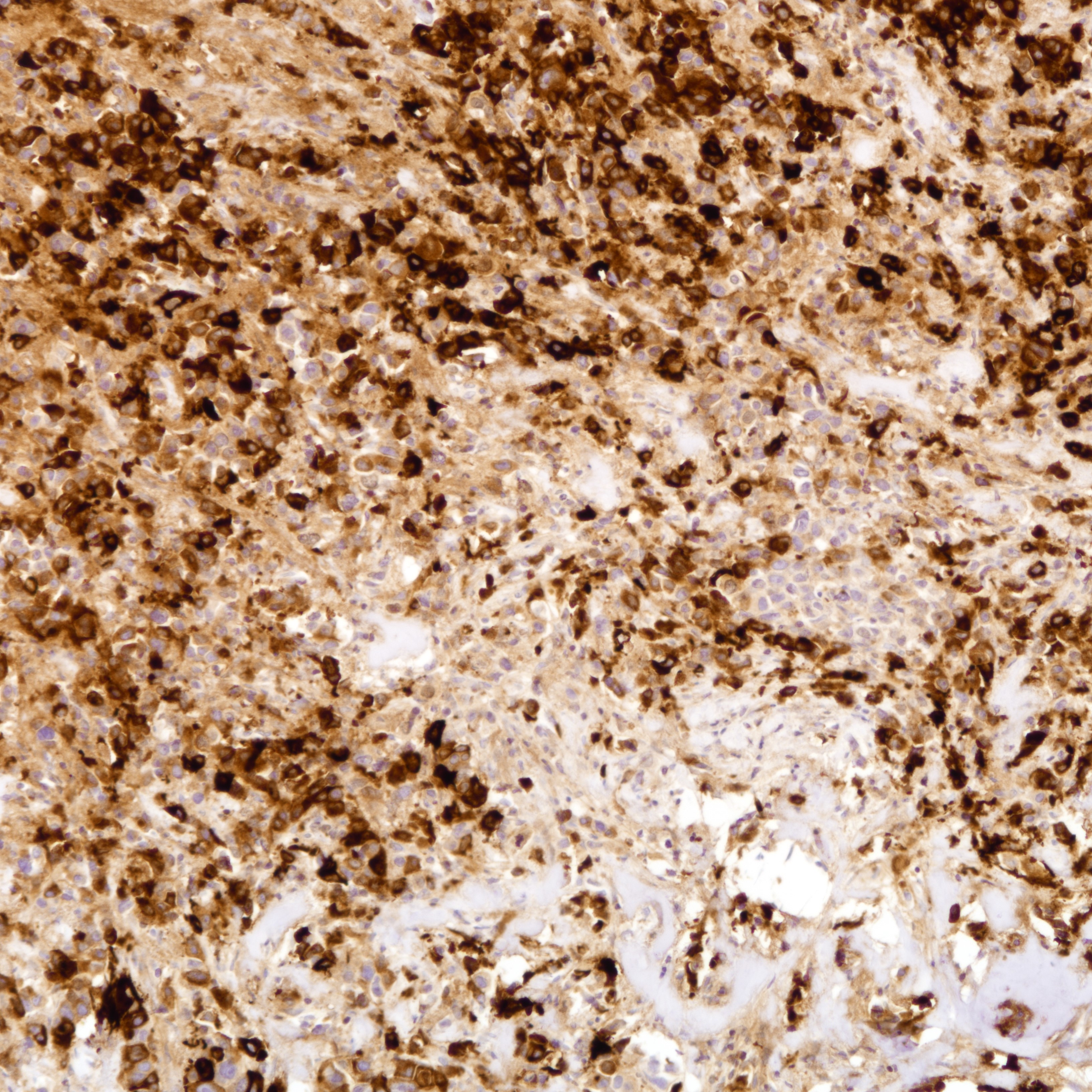Table of Contents
Definition / general | Essential features | Terminology | Pathophysiology | Clinical features | Interpretation | Uses by pathologists | Prognostic factors | Microscopic (histologic) images | Virtual slides | Positive staining - normal | Positive staining - disease | Negative staining | Sample pathology report | Board review style question #1 | Board review style answer #1Cite this page: Li JJX, Tse GM. Gross cystic disease fluid protein 15 (GCDFP-15). PathologyOutlines.com website. https://www.pathologyoutlines.com/topic/stainsgcdfp15.html. Accessed April 26th, 2024.
Definition / general
- A marker of apocrine differentiation
- Present in breast, salivary and seminal secretions with possible functions in breast carcinogenesis (Adv Exp Med Biol 2015;846:189, PLoS One 2009;4:e4696)
Essential features
- A marker of apocrine differentiation
- Positive mainly in breast and salivary gland lesions
- Useful in confirming breast primary in metastatic carcinomas but sensitivity is lower than GATA3
Terminology
- BRST2
- Prolactin inducible protein (PIP)
Pathophysiology
- Expression of GCDFP-15 is regulated by androgen receptor (Int J Mol Med 1999;4:135)
- Gene expression profiling revealed associations between PIP gene and cell adhesion, apoptosis and proliferation in breast cancer cells (PLoS One 2009;4:e4696)
Clinical features
- Blood levels of GCDFP-15 were elevated in a small subgroup of patients with benign (cyst) and malignant (preinvasive and invasive carcinoma) breast diseases (The Breast 1997;6:113, Int J Cancer 1999;84:568)
Interpretation
- Cytoplasmic staining
Uses by pathologists
- Confirming apocrine differentiation in breast and salivary gland lesions (Virchows Arch 2022;480:177)
- Confirming breast or salivary gland primary in metastatic carcinomas (J Mol Pathol 2022;3:219, Semin Diagn Pathol 2022;39:313)
- Less sensitive than GATA3 and mammaglobin for hormone receptor positive breast cancers
- Less sensitive than SOX10 for hormone receptor negative breast cancers
- Less sensitive than TRPS1 for hormone receptor positive, nonapocrine HER2 positive and triple negative breast cancers
- Diagnosis of salivary gland carcinomas including salivary duct carcinoma and acinic cell carcinoma
- Differentiating primary extramammary Paget disease (positive) from secondary extramammary Paget disease (negative) (Arch Pathol Lab Med 1998;122:1077)
Prognostic factors
- GCDFP-15 stain expression in breast cancer offers no independent prognostic value over hormone markers (BMC Cancer 2014;14:546)
Microscopic (histologic) images
Virtual slides
Positive staining - normal
- Apocrine glands, including Moll glands (breast, ear canal, eyelid, skin) (Am J Pathol 1983;110:105)
- Serous glands (bronchus, nasal cavity, lacrimal gland, salivary gland) (Am J Pathol 1983;110:105)
- Ceruminous glands (Virchows Arch 1998;432:255)
- Eccrine glands (Virchows Arch 1998;432:255)
Positive staining - disease
- Breast (BMC Cancer 2014;14:546, Mod Pathol 2001;14:768)
- Androgen receptor positive (apocrine differentiation) (52%)
- Invasive lobular carcinoma (52%)
- Mucinous carcinoma (54%)
- Solid papillary carcinoma (66%)
- Other factors favoring GCDFP-15 expression are HER2 positivity, old age and low histological grade
- Salivary gland neoplasms
- Pleomorphic adenoma (luminal cells) (81%) (Arch Pathol Lab Med 1991;115:158)
- Salivary duct carcinoma (100%) (Mod Pathol 1998;11:1033)
- Secretory carcinoma (75%) (J Oral Pathol Med 2015;44:244)
- Cutaneous neoplasms
- Primary extramammary Paget disease (Arch Pathol Lab Med 1998;122:1077)
- Papillary hidradenoma (Arch Pathol Lab Med 1991;115:1249)
Negative staining
- Secondary extramammary Paget disease (Hum Pathol 2002;33:545)
- Adenoid cystic carcinoma (Arch Pathol Lab Med 1991;115:158)
- Mucoepidermoid carcinoma (17%) (Hum Pathol 1989;20:281)
- Polymorphous low grade adenocarcinoma (Arch Pathol Lab Med 1991;115:158)
- Secretory carcinoma of the breast (Mod Pathol 2012;25:567)
- Prostate adenocarcinoma (10%) (Hum Pathol 1989;20:281)
Sample pathology report
- Lung nodule, core needle biopsy:
- Metastatic carcinoma, consistent with breast primary (see comment)
- Comment: Sections show clusters and nests of tumor cells with a moderate amount of cytoplasm, hyperchromatic irregular nuclei and occasional distinct nucleoli. The tumor cells show immunoreactivity to GATA3, GCDFP-15 and estrogen receptor, supporting a breast primary.
Board review style question #1
Which of the following is true about GCDFP-15 stain?
- It can be used in differentiating primary and secondary extramammary Paget disease
- It is an independent prognostic marker for breast cancers
- It is the most sensitive marker for metastatic breast cancer
- It is uniformly positive in all apocrine lesions of the breast
- It is positive in malignant but not benign salivary gland neoplasms
Board review style answer #1
A. It can be used in differentiating primary and secondary extramammary Paget disease. GCDFP-15 is positive in primary extramammary Paget disease while negative in secondary extramammary Paget disease (Arch Pathol Lab Med 1998;122:1077). Answer B is incorrect because GCDFP-15 does not show independent prognostic power over hormone markers. Answer E is incorrect because positive staining can be seen in pleomorphic adenomas. Answer D is incorrect because the positive rate of GCDFP-15 in apocrine lesions of the breast is just over 50%. Answer C is incorrect because GATA3 and TRPS1 are superior in sensitivity to GCDFP-15 for metastatic breast cancer.
Comment Here
Reference: Gross cystic disease fluid protein 15 (GCDFP-15)
Comment Here
Reference: Gross cystic disease fluid protein 15 (GCDFP-15)





